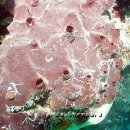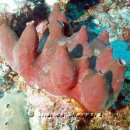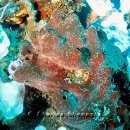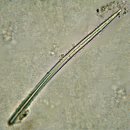Svenzea zeai Álvarez, van Soest & Ruetzler, 1998
Halichondrida, Dictyonellidae

|
a9_b2_c9_d4_e6_f2_g1_h2_i3_j1_k1_sp14.jpg |
|
Neopetrosia proxima |
| Common Name(s): |
Sven Zea’s sponge |
| Growth Form: |
Thick encrustation (> 5 cm) to massive with lobes, or thick erect branches. |
| Surface: |
Smooth; some specimens have small pores ~1 mm across, irregularly distributed. |
| Color: |
Purplish to brown externally, yellowish internally. Beige white in alcohol. |
| Consistency: |
Soft. |
| Oscules: |
Raised to tall and chimney- or amphora-like, to 1-2 cm in diameter. |
| Skeletal Components (Spicules, Fibers): |
Rods with 1 pointed and 1 blunt or rounded end (style), 190-300 x 5-12.5 μm, and rods with 2 pointed ends (oxea) 220-330 x 5-12.5 μm. Pointed ends stepped. |
| Skeletal Architecture: |
Exterior: Anisotropic reticulation of single spicules obscured by pigment grains, distinguishable with the naked eye. Interior: Ascending spicule tracts with 1-3 spicules, connected by single spicules, also obscured by pigment grains. Spongin around spicules, but not obvious. |
| Ecology: |
On coral reefs. Some specimens are infected with zoanthids. Larvae are large (2-3 mm across) whitish, and are occasionally seen floating in the water column. |
| Distribution: |
South Florida, Bahamas, Jamaica, US Virgin Islands (St. Croix), Curaçao, Belize, Panama and Colombia, in 13-20 m. Particularly common at Tobago. |
| Notes: |
Some specimens only have styles. Encrusting forms are similar to Ectyoplasia ferox, which is more orange-brown or orange, firm, brittle, and with a finely rough rather than smooth surface. |
| References: |
Álvarez et al. (1998), Collin et al. (2005). |
| Similar species: |
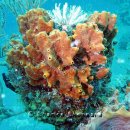
Ectyoplasia ferox |
|
|

